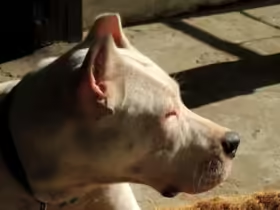Maintaining a healthy weight is crucial for your pet’s overall well-being. Overweight pets are at risk for various health issues, including diabetes, arthritis, and heart disease. By managing your dog’s or cat’s weight through proper diet, exercise, and routine care, you can help them live a longer, healthier life. Here’s a comprehensive guide to help you manage your pet’s weight effectively.
1. Understand Your Pet’s Ideal Weight
For Dogs:
- Breed-Specific Guidelines: Each dog breed has a specific weight range that is considered healthy. Consult your veterinarian or refer to breed standards to determine the ideal weight for your dog.
- Body Condition Score (BCS): Assess your dog’s weight using the BCS, a visual and tactile system that helps determine if your dog is underweight, overweight, or at an ideal weight.
For Cats:
- Ideal Weight Range: Most domestic cats should weigh between 8-12 pounds, but this can vary based on breed and body structure. Consult your vet for specific recommendations.
- Body Condition Score (BCS): Similar to dogs, the BCS can help you evaluate your cat’s weight. A healthy cat should have a visible waist when viewed from above and a slight tummy tuck when viewed from the side.
2. Monitor Your Pet’s Food Intake
For Dogs:
- Measure Portions: Use a measuring cup to ensure you’re feeding your dog the correct amount of food based on their size, age, and activity level.
- Check Labels: Review the feeding guidelines on your dog’s food packaging, but adjust based on your dog’s specific needs. Consult your vet if unsure.
For Cats:
- Portion Control: Measure your cat’s food to avoid overfeeding. Free-feeding (leaving food out all day) can lead to weight gain, so scheduled meals are recommended.
- Calorie Count: Be aware of the calorie content in your cat’s food. Consult with your vet to determine the right amount of daily calories based on your cat’s size and activity level.
3. Choose the Right Diet
For Dogs:
- High-Quality Food: Select a dog food that lists meat as the first ingredient and contains minimal fillers like corn or soy. High-quality food is more nutrient-dense, so your dog will feel full with smaller portions.
- Weight Management Formulas: If your dog needs to lose weight, consider a specialized weight management formula that is lower in calories but still provides essential nutrients.
For Cats:
- High-Protein, Low-Carb Diet: Cats are obligate carnivores, so their diet should be high in protein and low in carbohydrates. Choose a cat food that reflects this nutritional balance.
- Prescription Diets: If your cat is overweight, your vet may recommend a prescription diet specifically designed for weight loss.
4. Incorporate Regular Exercise
For Dogs:
- Daily Walks: Aim for at least 30 minutes of walking each day, but adjust based on your dog’s breed and energy level. High-energy breeds may require more.
- Interactive Play: Games like fetch, tug-of-war, or agility exercises can help your dog burn calories while having fun.
For Cats:
- Interactive Toys: Use laser pointers, feather wands, or balls to encourage your cat to chase and pounce, simulating hunting behavior and providing necessary exercise.
- Climbing Structures: Provide cat trees or shelves to promote climbing, which is a natural and effective form of exercise for cats.
5. Limit Treats and Table Scraps
For Dogs:
- Healthy Treats: Choose low-calorie, nutritious treats and limit them to 10% or less of your dog’s daily caloric intake.
- Avoid Human Food: Table scraps are often high in calories and can contribute to weight gain. Stick to dog-specific treats.
For Cats:
- Moderation is Key: Treats should make up no more than 5-10% of your cat’s daily caloric intake. Opt for healthy, low-calorie options.
- No Table Scraps: Human food can be high in fat and calories, leading to weight gain in cats. Keep treats cat-friendly and portioned.
6. Schedule Regular Vet Check-ups
For Dogs and Cats:
- Routine Weigh-Ins: Regular veterinary visits allow for consistent monitoring of your pet’s weight. This can help catch weight changes early and adjust their diet or exercise routine as needed.
- Health Screenings: Your vet can check for underlying health issues that may contribute to weight gain or loss, such as thyroid problems or diabetes.
7. Consider Metabolic Support
For Dogs:
- Supplements: Some dogs may benefit from metabolic supplements that help boost their metabolism and support weight loss. Consult your vet for recommendations.
- Prescription Diets: In some cases, a prescription diet formulated for weight loss may be necessary to help your dog reach a healthy weight.
For Cats:
- Metabolic Supplements: Certain supplements can aid in weight management for cats, but always consult your vet before adding anything new to their diet.
- Special Diets: Prescription weight-loss diets can be effective for cats struggling with obesity. Your vet can help you choose the right one.
8. Create a Weight Loss Plan if Needed
For Dogs and Cats:
- Set Goals: Work with your vet to set realistic weight loss goals for your pet. This might include specific targets for weight reduction and timelines.
- Track Progress: Keep a log of your pet’s weight, diet, and exercise routines. Regularly review and adjust the plan as necessary to ensure steady progress.
9. Be Patient and Consistent
For Dogs and Cats:
- Consistency is Key: Managing your pet’s weight is a long-term commitment. Consistent feeding, exercise, and monitoring are crucial for success.
- Celebrate Small Wins: Weight management is a gradual process. Celebrate small milestones along the way, like a reduction in weight or improved fitness, to stay motivated.
Conclusion
Managing your dog’s or cat’s weight is essential for their overall health and longevity. By understanding their ideal weight, controlling their diet, ensuring regular exercise, and monitoring their progress, you can help your pet maintain a healthy weight. With patience and consistency, your furry friend will not only achieve a healthier weight but also enjoy a happier and more active life.











Leave a Reply